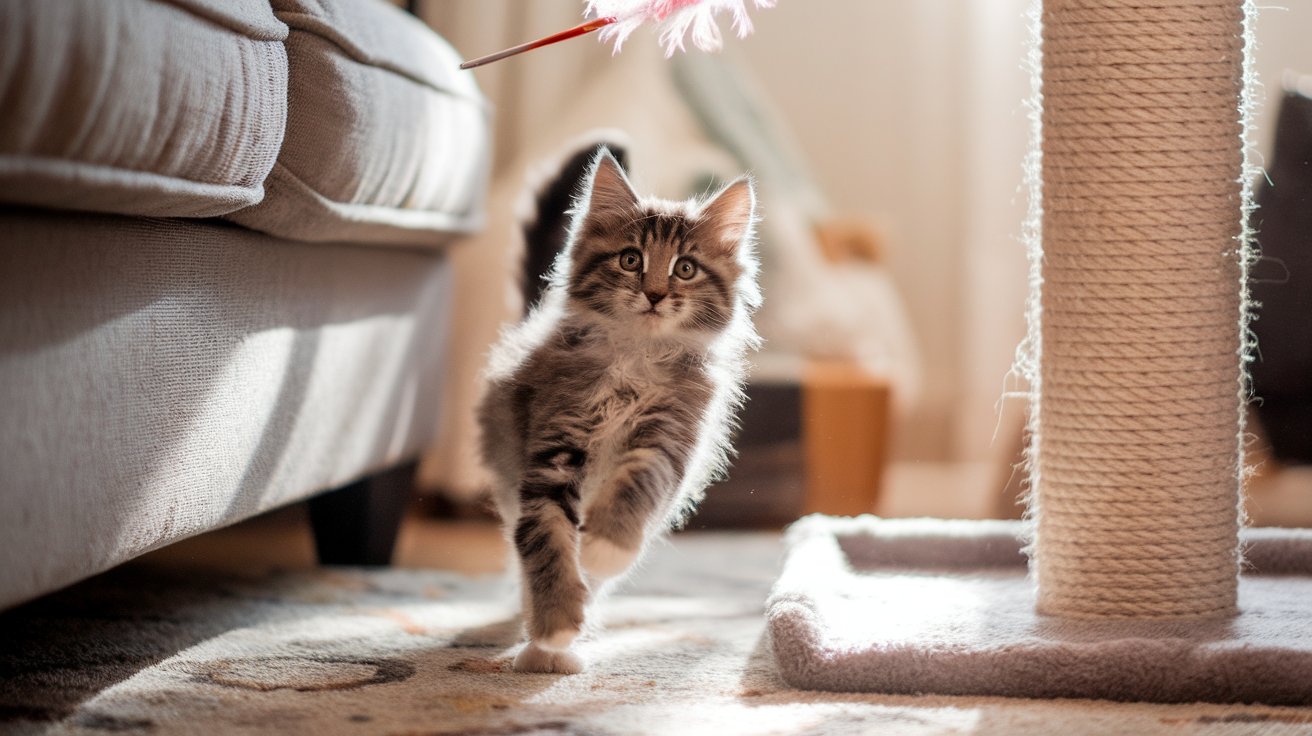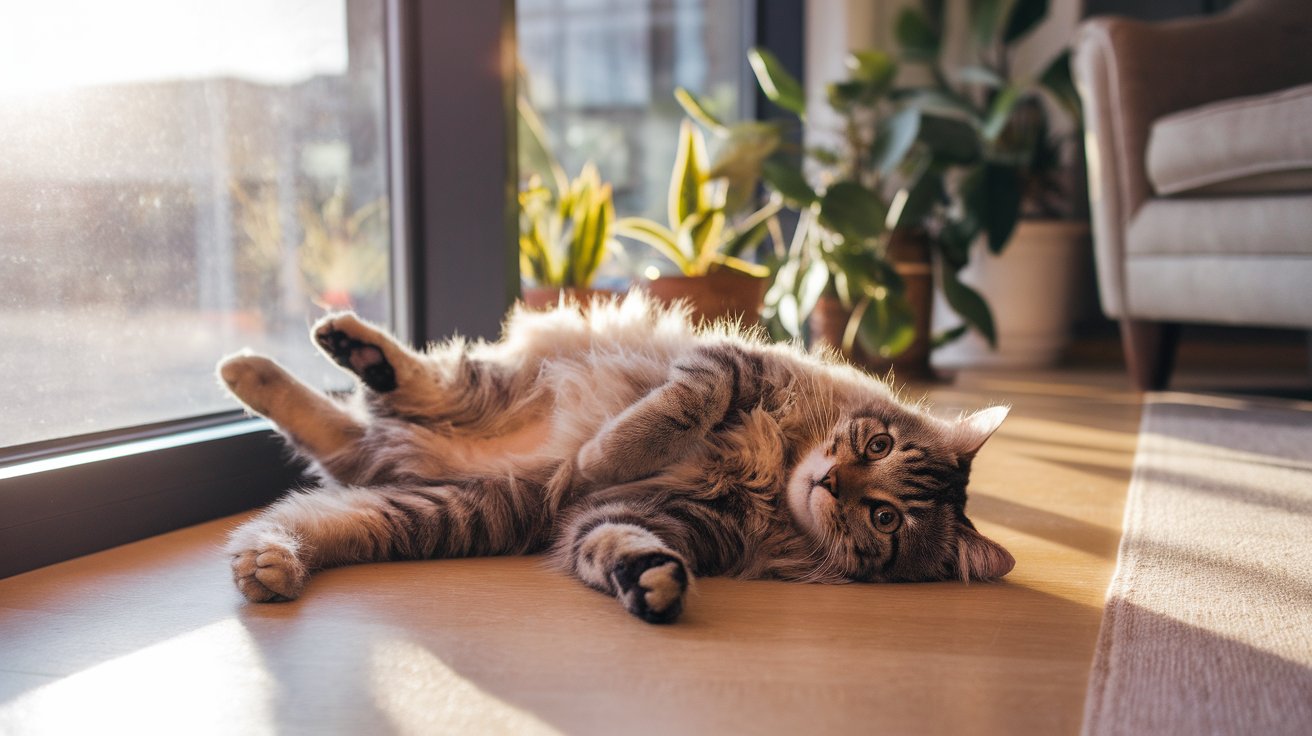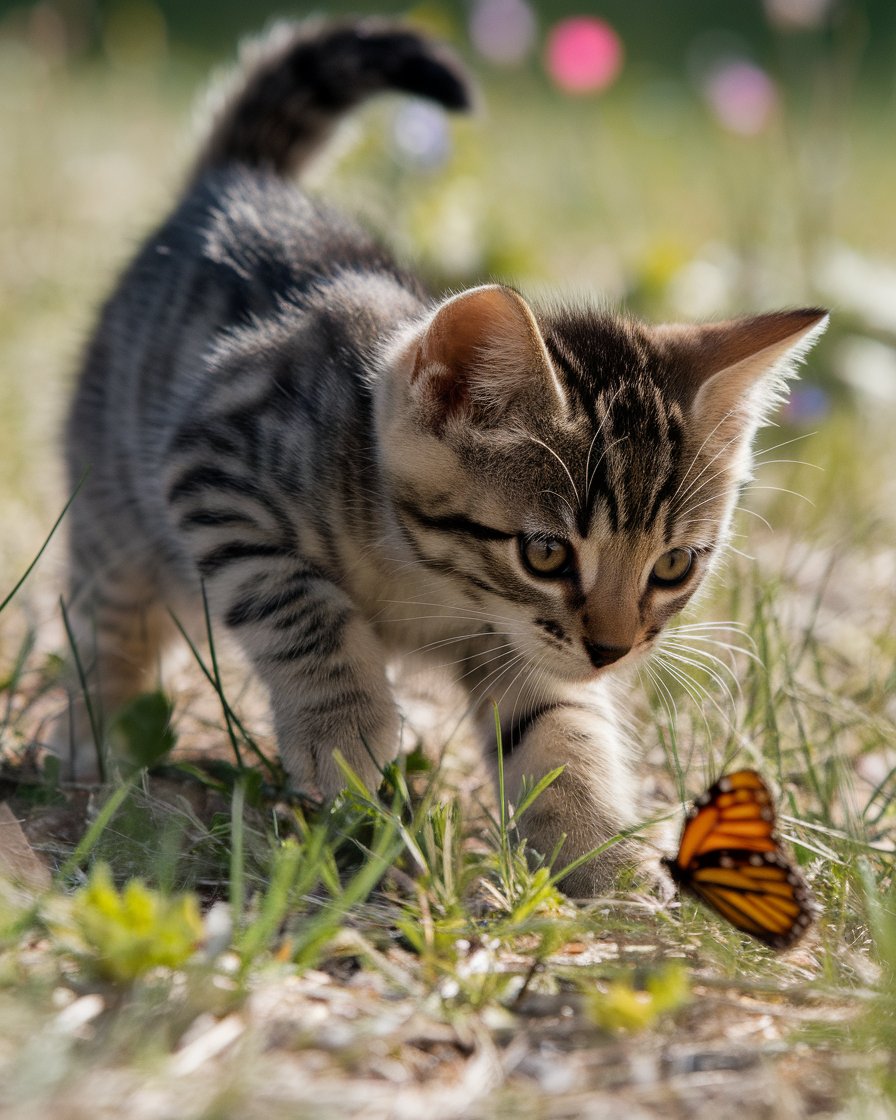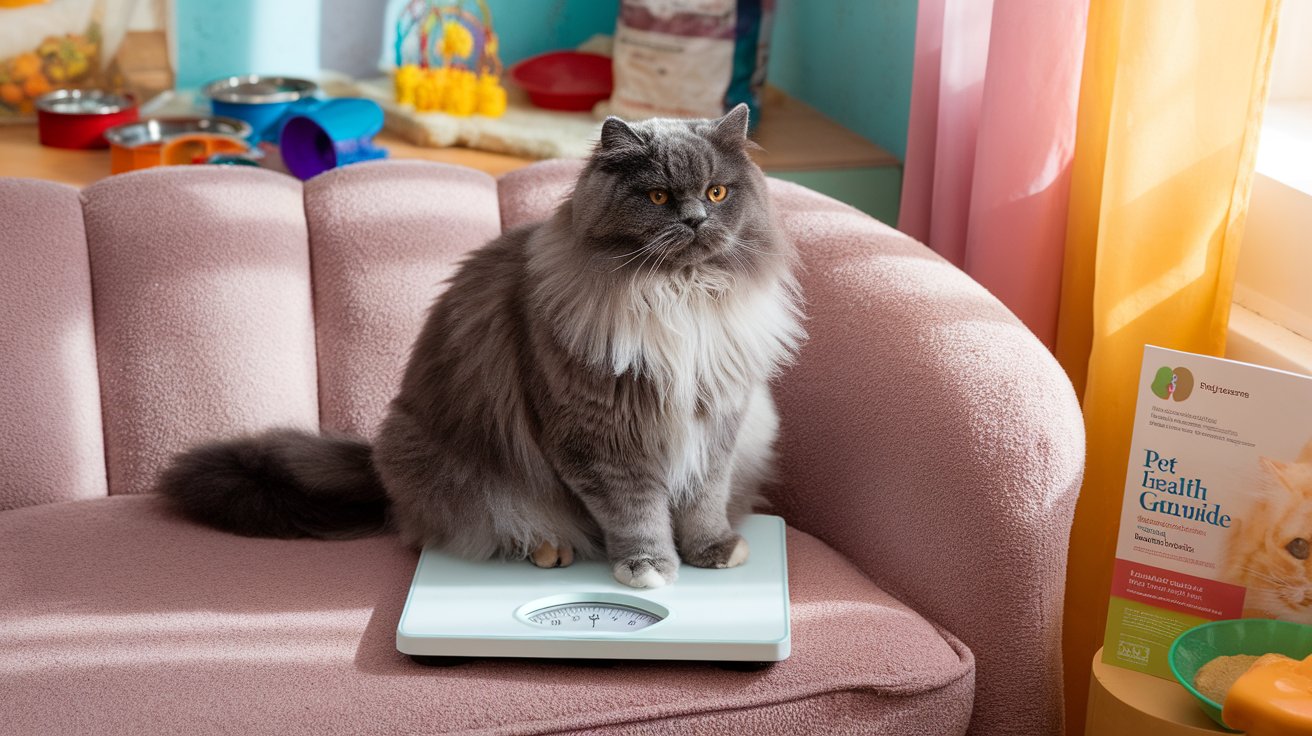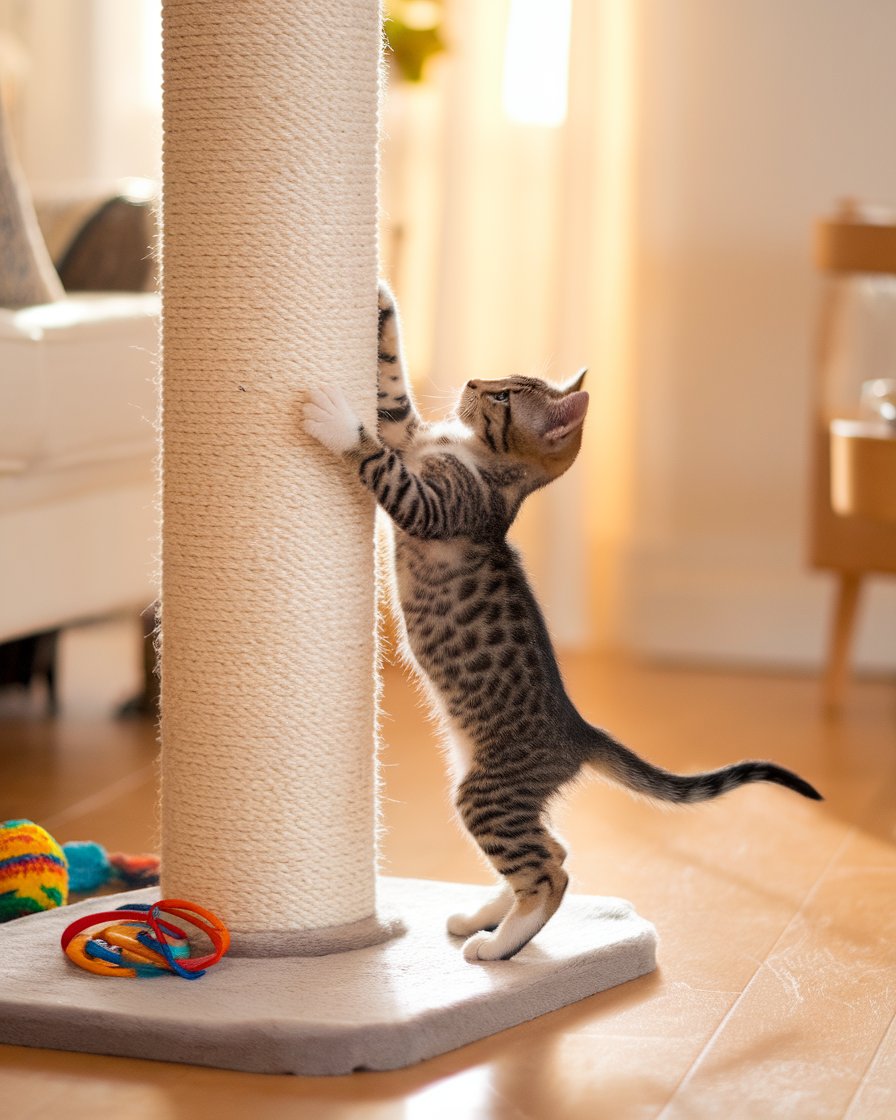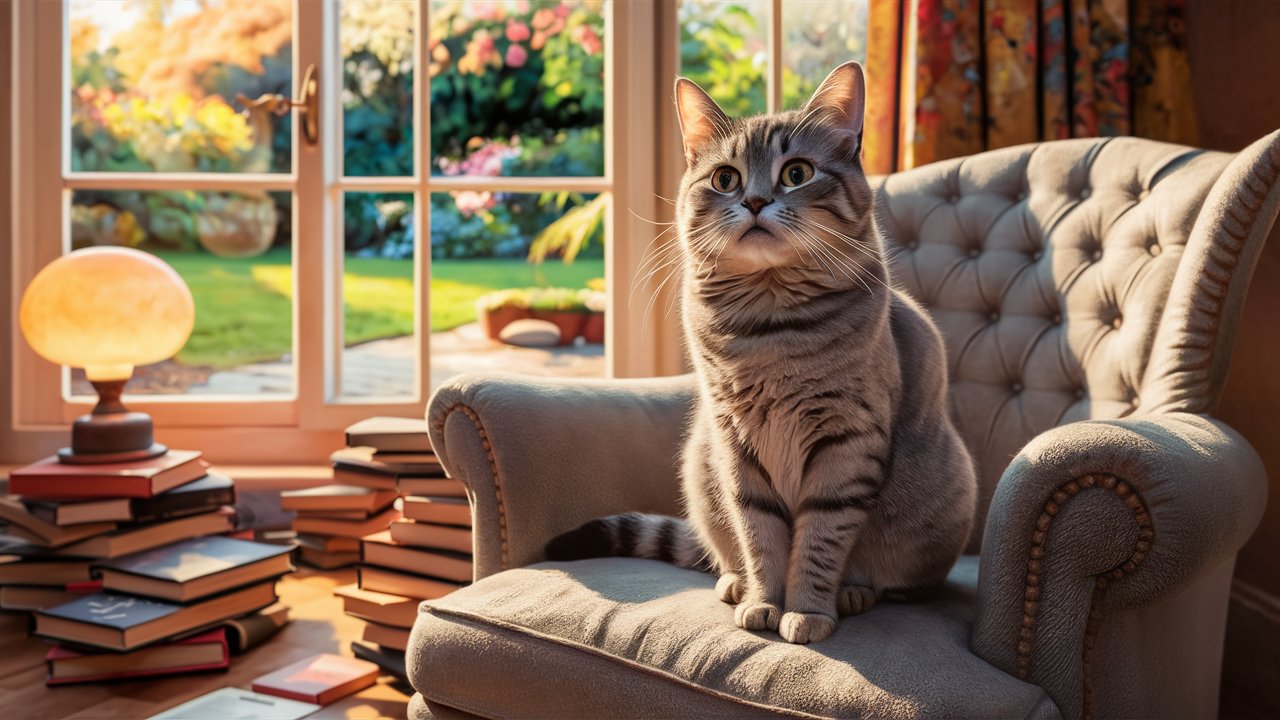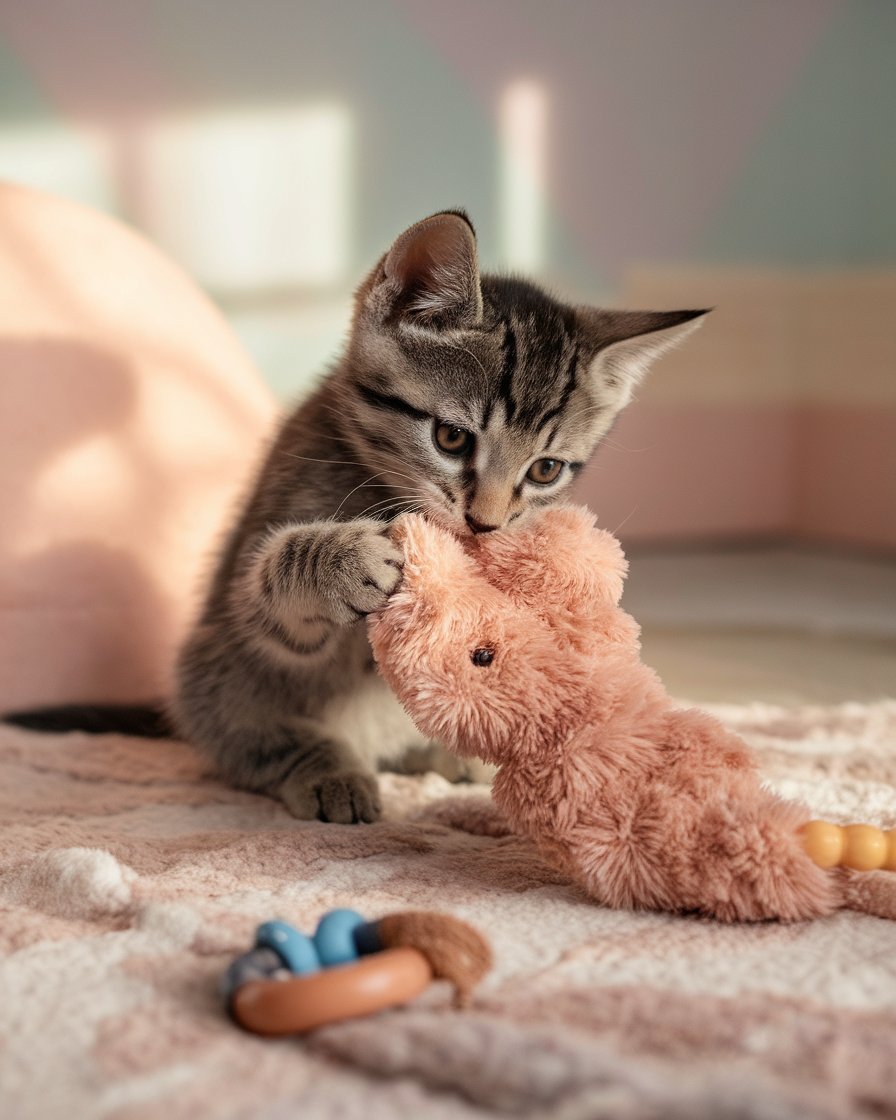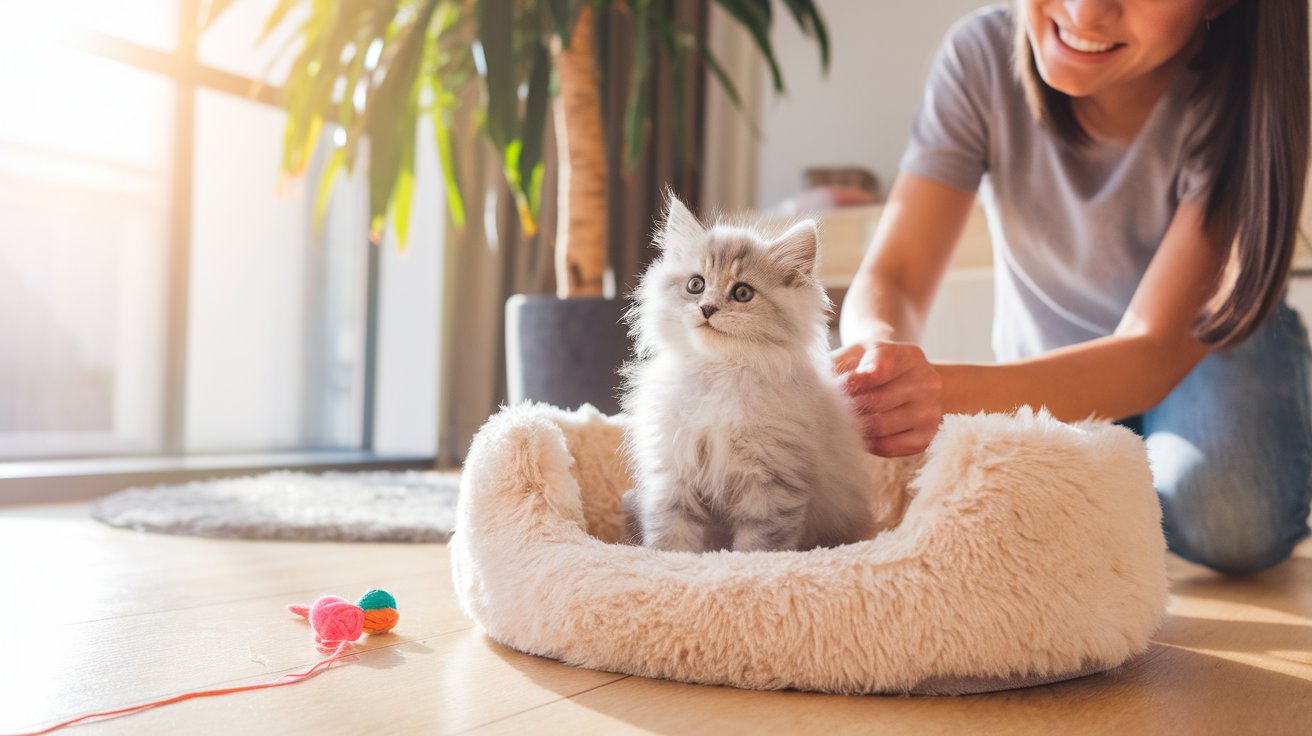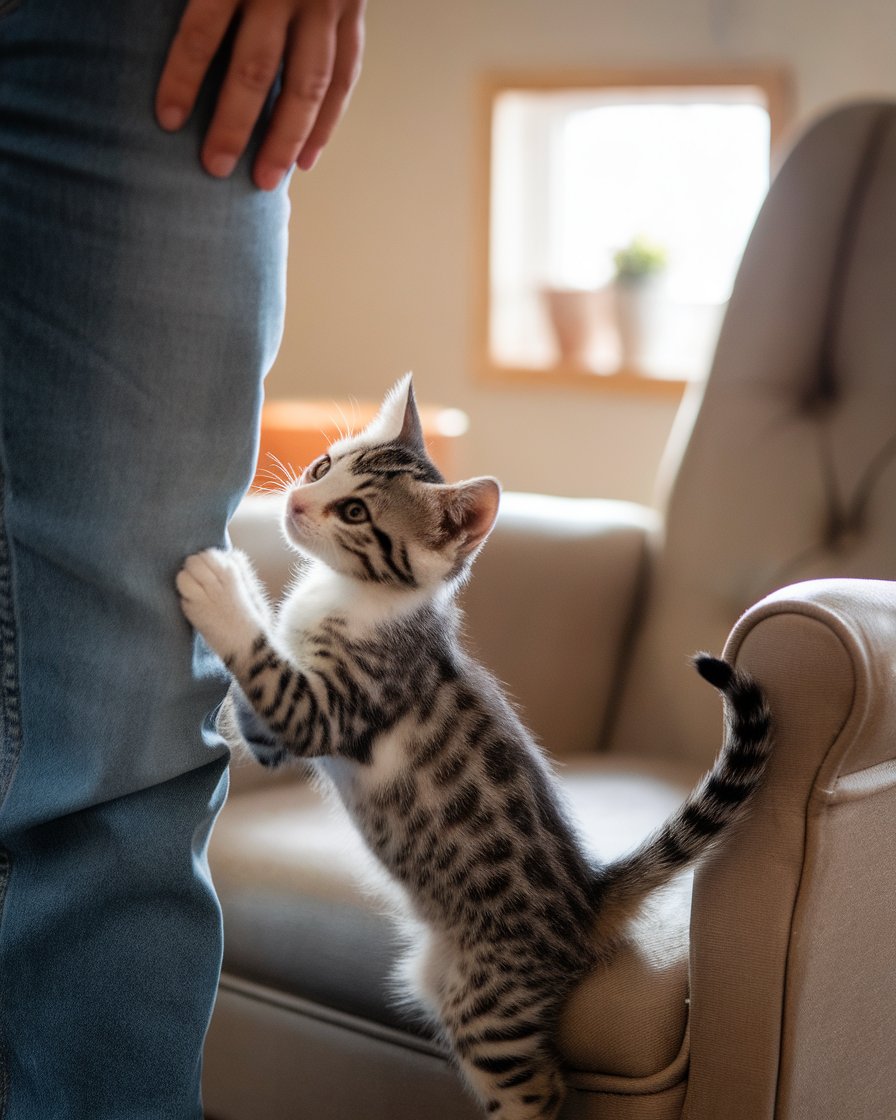Introduction
Kittens display a variety of fascinating behaviors that are essential for their development and well-being. From playful scratching to biting and rubbing, these behaviors help kittens learn about their environment and mark their territory. Kitten behavior is often misunderstood, with some owners viewing it as mischievous, but in reality, it’s completely normal for a kitten to exhibit such actions, especially during their early weeks. As kittens grow, they use these behaviors to interact with their surroundings and communicate their needs, from using the litter box to vocalizing for attention.
It’s important for humans to recognize that these actions, while sometimes destructive, are normal kitten behaviors. Whether they’re biting, scratching, or meowing for food and attention, kittens are simply expressing themselves. Learning how to guide your kitten through this stage helps ensure their growth and development. By understanding what’s normal and providing the proper tools, such as toys and scratching posts, you can encourage positive behavior, reduce unwanted actions, and promote optimal social development.
Key Takeaways
Kittens naturally display hunting instincts like stalking and pouncing, which are essential for their development.
Scratching is a healthy and normal behavior that helps kittens maintain their claws and stretch their muscles.
Biting, often linked to teething, is a way kittens explore their surroundings and relieve discomfort.
Providing appropriate toys helps redirect both biting and scratching behaviors, preventing damage to household items.
Rubbing is a territorial behavior where kittens transfer pheromones to mark their environment and show affection.
Meowing is a primary form of communication for kittens, signaling needs such as hunger, attention, or discomfort.
Hunting Instincts of Kittens
Kittens are naturally curious and exhibit strong hunting instincts from as early as seven weeks. These behaviors are critical for their development as they explore the world around them. Even though they are domesticated, their actions closely resemble those of their wildcat ancestors. Kittens and cats display behaviors such as stalking, pouncing, and playful biting. These actions help kittens hone their motor skills and learn about their environment. Kittens are adorable, and their energy often seems endless as they practice their instincts, which are essential for their survival and for a healthy, enriched life as a house pet. Understanding that kittens need to explore and express their natural tendencies is key to guiding their growth, ensuring a smooth transition into adulthood. Remember, if a kitten gives a playful hiss, it’s all part of their communication.
Decoding Hunting Instincts in Kittens: Key Insights
Kittens naturally develop hunting behaviors, which are vital for their physical and mental growth. Their actions, such as stalking and pouncing, help them adapt to their surroundings. Here’s a breakdown of the essential elements that nurture their predatory instincts.
1. Stalking and Pouncing Development
Kittens inherit predatory behaviors from their wild ancestors. As they stalk and pounce, they develop their agility and coordination. These behaviors are not only fun to observe but also essential for their motor skills. It’s important to offer them toys that encourage this natural hunting instinct, ensuring they practice these movements in a healthy, productive way. Pet owners should also take care to discourage the use of human hands or feet as targets for these actions to avoid future biting issues.
2. Importance of Playful Interaction
Interactive play is crucial in promoting a kitten’s predatory instincts while fostering a strong bond with their owner. Toys that mimic prey, like balls or feather wands, are particularly effective in satisfying a kitten’s urge to hunt. This kind of play helps reduce excessive energy that could otherwise lead to problematic behaviors, such as scratching or meowing at inconvenient hours. Regular play sessions provide an outlet for these instincts while ensuring a well-balanced and enriched life for the kitten.
3. Training Hunting Behaviors Positively
While it’s natural for kittens to exhibit biting, scratching, or pouncing, guiding these instincts is key to maintaining a harmonious home. Pet owners can achieve this by offering a range of toys and activities that simulate hunting. Redirection to toys whenever a kitten tries to bite or scratch undesirable objects teaches them appropriate behavior. Over time, this approach not only improves their physical development but also nurtures their emotional well-being.
Stalking and Pouncing
Kittens demonstrate their predatory instincts by stalking and pouncing on anything that catches their eye, from toys to household objects. This behavior mimics their wildcat heritage, where hunting was essential for survival. The crouch-and-leap technique kittens use helps improve their agility and coordination, preparing them for more advanced skills as they mature. For pet owners, encouraging these behaviors with appropriate toys can be beneficial, helping kittens burn off excess energy while nurturing their natural instincts. However, it’s important to avoid encouraging them to use fingers or toes as toys, as this can lead to problematic biting habits later in life.
Playful Toy Interactions
Engaging a playful kitten with the right toys is essential for their growth and social development. Toys that mimic prey, such as small balls or feather wands, allow them to exhibit their natural hunting behaviors in a safe, controlled way. This type of play helps strengthen the bond between kittens and their owners, as it promotes trust and interaction. Playtime also helps improve a kitten’s coordination and agility, fostering both physical and mental development. Ensuring a variety of toys, along with consistent playtime, keeps kittens engaged and can reduce attention-seeking behaviors like scratching or meowing at odd hours.
Scratching Behavior
Scratching is a normal and essential behavior for kittens, helping them maintain their physical health and mental well-being. While it might seem destructive, scratching is how they keep their claws sharp, stretch their muscles, and mark their territory. Understanding this natural instinct allows owners to respond with patience rather than frustration. As kittens grow, this behavior can become more prominent, especially as they become more active and exploratory. Providing appropriate outlets for scratching helps them engage in this behavior without damaging furniture or household items. By addressing this need early on, owners can ensure their kittens develop healthy habits as they transition into adulthood.
Case Study: Implementing Scratching Posts to Prevent Destructive Scratching in Kittens
A 2018 study conducted by the University of Lincoln examined how providing appropriate scratching outlets, such as scratching posts, impacted the behavior of domesticated kittens. The researchers observed 100 households, each introducing scratching posts of various heights and materials to address destructive scratching. Over the course of 6 weeks, households that incorporated taller, sturdy scratching posts reported a significant decrease in damage to furniture and household items. The kittens, ranging from 7 weeks to 12 weeks old, began to consistently use the posts as they explored and honed their natural instincts.
The study found that kittens provided with textured scratching surfaces that mimicked tree bark showed the highest engagement. In contrast, kittens without proper outlets exhibited more problematic behaviors, such as scratching carpets and sofas. This research highlights the importance of addressing a kitten’s instinctual need for scratching early to prevent long-term behavioral issues and furniture damage.
Natural Instincts for Claw Maintenance
Scratching is crucial for a kitten’s physical development. It helps them remove dead layers of their claws, keeping them healthy and strong. Scratching also allows kittens to stretch their paws, legs, and back, promoting better muscle coordination. This natural behavior isn’t just about claw maintenance, but it also helps them release tension and expend extra energy. Many new kitten owners may see this behavior and worry about damage to furniture or carpets, but it’s completely normal and vital for their kitten’s growth. Understanding that scratching is an instinctive need helps in guiding your kitten to scratch in acceptable places, keeping both your home and your pet happy.
Redirecting Scratching Behavior
While scratching is a healthy activity for kittens, it’s important to guide their behavior to avoid damage to your home. Providing various scratching posts and surfaces that mimic the textures kittens are naturally drawn to is key. Posts should be sturdy, tall, and placed in areas where your kitten typically plays or rests. This satisfies their urge to scratch while protecting furniture. If your kitten is exhibiting unwanted scratching behavior, redirecting them to appropriate scratching areas is an effective strategy. By using toys and treats to encourage the use of designated posts, you can guide your kitten’s behavior, ensuring they develop proper scratching habits as they grow into adult cats.
Biting Tendencies in Kittens
Biting is a natural behavior in kittens that often emerges as they explore their environment and experience teething discomfort. While it may seem alarming to new kitten owners, this behavior is completely normal for a developing kitten. During play, kittens may nip at their littermates or humans, testing their boundaries and learning how to control their bite strength. However, understanding the difference between playful biting and aggressive behavior is essential. Most biting is playful, but if it seems excessive or painful, it may require intervention. Providing the right tools for teething and guiding your kitten’s behavior can help manage this phase effectively.
Teething and Exploration
Teething is a significant stage of kitten development, and biting is often their way of coping with the discomfort. Around the time they are 12 weeks old, kittens start teething, which makes their gums sore. As a result, they may chew on furniture, toys, or even fingers to relieve the pressure. Kittens are also naturally curious, and biting is one way they explore the world around them. It’s important to give your kitten safe items, like teething toys, to channel this behavior productively. Understanding that this biting is part of their teething process helps reduce frustration for both the kitten and the owner, keeping the environment positive.
Redirecting Biting Behaviors
Managing a kitten’s biting habits is essential to ensure they don’t develop destructive or painful behaviors as they grow. One of the best ways to redirect biting is by offering plenty of toys designed for kittens to chew on, such as soft, furry toys or teething rings. If your kitten starts biting your hands or feet, gently move them away and give them a toy instead. Over time, they will associate biting with their toys rather than human skin. If biting becomes excessive or seems more aggressive, it might be a good idea to consult with a veterinarian to ensure there are no underlying health issues causing the behavior.
To understand your kitten’s playful bite is to acknowledge their instinctive nature, one that seeks to explore the world with curiosity and affection.” – Jackson Galaxy, cat behavior expert
Marking Behavior: Rubbing and Meowing
Kittens use both physical and vocal methods to communicate and mark their territory. One of the most common behaviors is rubbing, where they use their face, cheeks, or body to transfer their scent onto objects or their owners. This behavior, while often seen as a sign of affection, also establishes their presence and comfort within their environment. Meowing, on the other hand, is their primary vocal tool, used to communicate a variety of needs or emotions. By observing these behaviors, owners can gain a deeper understanding of their kitten’s emotional state and learn to respond in ways that foster a strong bond.
Territorial Marking Through Rubbing
When a kitten rubs against you, it’s not just showing love but also marking its territory. This rubbing behavior involves transferring pheromones from the scent glands located on their face, ensuring their environment smells familiar and safe. You may notice your kitten weaving between your legs or rubbing their cheeks against furniture, which is all part of their natural territorial behavior. While kittens are tiny, this behavior is a big part of their social development, helping them feel more secure. It’s important to let your kitten perform these behaviors, as it’s a healthy sign that they are adjusting to their new surroundings and feeling at home.
Communication Through Meowing
Meowing is one of the most distinct ways kittens communicate with humans. Unlike rubbing, which is subtle and scent-based, meowing is a clear vocal signal used to express various needs like hunger, attention, or discomfort. Each kitten may develop its own unique way of meowing, with different pitches and frequencies. For example, a kitten may meow more persistently when seeking food or give soft, gentle meows when looking for affection. Understanding the context behind these vocalizations helps owners respond appropriately, whether that means offering a meal or simply providing comfort. Over time, this communication strengthens the bond between kittens and their human companions.
Conclusion
Understanding your kitten’s behaviors, from scratching to biting, is crucial for their development and social adjustment. These actions, while sometimes misunderstood, are part of normal kitten behavior and essential for their growth. For example, like biting during teething or scratching to maintain their claws are activities that support their physical well-being. While some of these behaviors can be destructive, they’re completely normal, and with proper guidance, you can ensure your kitten develops healthy habits.
As kittens grow, their quirky behaviors often evolve, and it’s important to find an adult mentor in your cat to help the transition. By using the right toys that your kitten enjoys and creating a kitten-proof environment, you can prevent problematic kitten behaviors. This process will help them understand what’s acceptable and guide them into adulthood as well-socialized cats, ensuring a happy and healthy pet for years to come.

